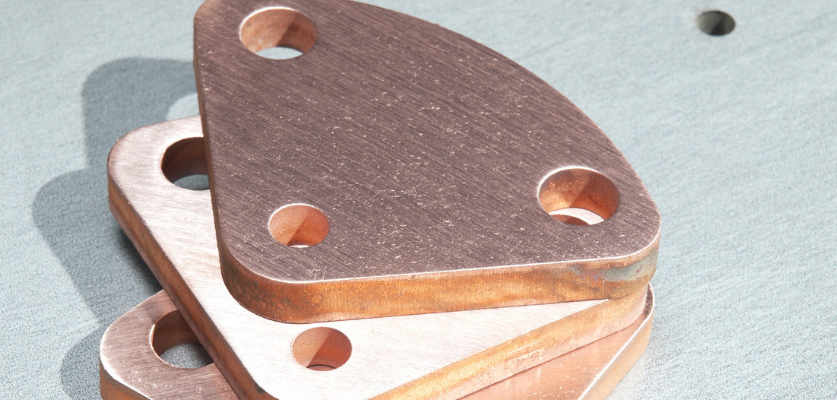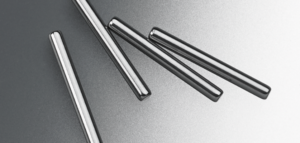Why grind with two wheels at once?
True to its name, double disk grinding uses two opposing abrasive wheels to grind two sides of a material at the same time. This makes it a very efficient grinding method for achieving a tight tolerance surface finish, flatness, and parallelism in the right applications. Yet there is somewhat of an aura of mystery surrounding double disk grinding.
How the Process Works
Double disk grinding is like two-sided Blanchard grinding, in that it removes material more quickly than a method such as surface grinding. (Of course, with any abrasive method, material removal speed depends on the wheel choice and other variables.) However, double disk grinding tolerances are superior to what can be achieved with a Blanchard grinder.
Because it grinds two sides of a workpiece simultaneously, double disk grinding can remove a lot more material and, in effect, cut the grinding time in half. In addition, the process is well suited to a wide range of materials — from stainless steel, tool steels, sintered metals, and high-strength alloys, to ferrous or non-ferrous metals, bronze, copper, aluminum, and more.
Uncovering the Mystery of the Double Disk Machine
Part of the “mystery” of double disk grinding is that it occurs largely out of sight, with the grinding process typically enclosed by the hood of the machine. This lack of visibility might make a less confident and experienced machinist a little nervous.
In a double disk machine, the disks are mounted opposite each other on a pair of spindles. The machines come in both vertical and horizontal configurations, referring to the position of the spindles, not the direction of travel for the parts. At Metal Cutting Corporation, we prefer to use vertical spindle machines because they allow for better control over part feeding.
The grinding machine’s controls also enable an expert machinist to program wheel RPMs, feed, grind speed, and how much material to remove. In addition, a well-engineered double disk grinding machine has the ability to read and measure the thickness of every part as it is being ground, and to provide the machine with immediate feedback. This allows the machine to continuously adjust the grinding size regardless of wear on the abrasive wheels.
Some Advantages of Double Disk Grinding
In general, double disk grinding services can provide a high degree of dimensional accuracy, with tolerances, parallelism, and flatness to ±0.0002″ (0.00508 mm). It is also cost-effective for controlling the thickness of small metal parts.
With its two abrasive discs, double disk grinding removes equal amounts of material from two opposing sides of the workpiece simultaneously. This equalizes the amount of stress on the workpiece, which enables the process to:
- Reduce internal stress and improve part stability during machining and secondary operations
- Provide a high degree of accuracy and parallelism
- Achieve flatness tolerances that would be very difficult to get with a single-sided grinding process
The double disk grinding process also produces a better surface finish than many other grinding techniques, by reducing or eliminating grind patterns as parts exit the process.
An impressive array of metal parts are machined on double disc grinders, including stampings, die castings, blankings, rings, and valves. For automotive components, the process is widely used in the manufacture of brake pads, bearings, and engine parts. Because double disk grinding provides consistent part-to-part parallelism and flatness in mass production, the method is a great option for material that needs to be stacked or spot-faced.
Why Choose Double Disk Grinding Over Flat Lapping?
At Metal Cutting, we sometimes get asked about the differences between double disk grinding and precision flat lapping. It is our contention that the two are (no pun intended) overlapping methods.
When you have metal parts where the surface finish, flatness, parallelism, or thickness must be held to very close tolerances, you could either double disk grind or flat lap those parts. However, the differences between the two processes — in surface finish, speed, and labor — are what drive the choice.
Both methods use abrasive particles to remove material from workpiece surfaces. But where double disk grinding use fixed abrasives, bonded to the dual wheels, flat lapping uses loose abrasive powders suspended in a freely moving liquid (slurry). In addition, the lapping process itself is generally done at low speeds.
But perhaps the biggest difference between double disk grinding and flap lapping is in the way that parts are fed through the machines.
With a flat lapping machine, every part must be physically loaded onto a carrier by hand and then unloaded by hand after grinding is complete. If you have 1,000 parts and your lapping machine carrier holds 100 parts, you have to reload the carrier ten times. If you have 10,000 parts . . . 100,000 . . . a million parts . . . that makes loading and unloading a flat lapping machine extremely labor intensive. Issues such as surface finish tension can cause parts to stick to the plate, further slowing the unloading process.
In contrast, double disk grinding is faster, less labor-intensive, and more cost-effective than flat lapping. That is because, although parts are fed into a double disk grinder one at a time, the parts actually feed themselves through the machine.
The parts — of any size or quantity — are poured into a vibrating feeder bowl. From there, they vibrate their way up a gangplank onto a pathway and march themselves, one at a time, into the double disk grinder’s two spinning wheels. It all happens far more rapidly than you could hand-load the carrier for a flat lapping machine.
The double disk machine’s angled grinding wheels grab each part, exert the subtractive grinding process, and 120° later, the part exits onto a stage. There, each part is automatically measured and then rejoins other parts that have been equivalently ground. The machine constantly makes adjustments as the parts are continuously fed.
So in addition to saving the time and cost of having people to load the machine by hand, the double disk process is far faster because in that 120° arc, it can remove enough material to complete the job without any manual unloading and reloading of the plates.
Where Flat Lapping Excels
On the other hand, there is a potential disadvantage of double disk grinding when compared with flat lapping. That is, the grinding process inherently does not result in as smooth a surface finish as flat lapping, which is often used to correct surface irregularities or damage on metal parts.
Even though there are a universe of remarkable wheels that can be selected for double disk grinders, from common abrasives to CBN and other super-abrasives, the surface finish of a lapped part, given the proper grit and optimal lapping slurry, will be smoother. In fact, using advanced handling and tooling techniques, lapping can achieve superior Ra surface finishes as smooth as 4 Ra off the machine.
What About Your Application?
Together, the characteristics of double disk grinding make it highly cost-effective for mass production. In fact, for high-volume operations requiring close tolerances, the method actually provides optimal cost efficiency with a higher quantity production run.
In the final analysis, deciding whether double disk grinding is the optimal process for your application requires an in-depth understanding of your specific job parameters, as well as an understanding of the different options for precision metal grinding.






